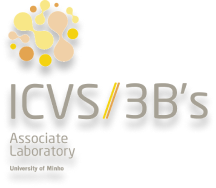
Impact of patho-connectomics in neuropsychiatric disorders: targeting disrupted functional networks to rebalance brain dynamics
Over 500 million people worldwide are estimated to suffer from some form of psychiatric disorder. Based on behavioral symptoms, psychiatric disorders are classified as depression, dementia, schizophrenia, autism, anxiety disorders, among others. However, their pathophysiology remains poorly understood, which limits the design of novel and more efficient diagnosis and therapeutic interventions. Over the last decade, a substantial number of neuroimaging studies have related different psychiatric disorders to alterations in the functional connectivity between brain areas measured with fMRI, affecting large-scale functional networks. This leads to the hypothesis that the behavioral symptoms characterizing some – if not most – psychiatric disorders may be the expression of an ineffective functional integration at the system’s level (or patho-connectomics), while the specialized local processing within brain areas remains mostly unaffected. Overall, this is an interdisciplinary project combining state-of-the-art techniques in Biomedical Engineering (i.e. dynamic connectomics analysis and in silico perturbation of whole-brain models), with the expanding theory in Network Science (coming from theoretical Physics and applied Mathematics) in order to address important questions regarding the pathophysiology
of psychiatric disorders and ultimately lead to the design of new and more effective diagnostics and treatments.
Funding Agency
FCT
Project Reference
CEECIND/03325/2017
Project Members

Main Project Outcomes
S. Queirós, “Right ventricular segmentation in multi-view cardiac MRI using a unified U-net model”, in E. Puyol Antón et al. (eds) Statistical Atlases and Computational Models of the Heart. Multi-Disease, Multi-View, and Multi-Center Right Ventricular Segmentation in Cardiac MRI Challenge. STACOM 2021. Lecture Notes in Computer Science, vol 13131, pp. 287-295, Springer, Cham, 2022.
“Best Paper Award in the M&Ms-2 Challenge”, by M&Ms2 Challenge organizers and the Medical Image Computing and Computer Assisted Intervention (MICCAI) Society.
Main Project Outcomes
1.Shine, J. M., Müller, E. J., Munn, B., Cabral, J., Moran, R. J., & Breakspear, M. (2021). Computational models link celular mechanisms of neuromodulation to large-scale neural dynamics. Nature neuroscience, 24(6), 765-776.
2.Anyaeji, C. I., Cabral, J., & Silbersweig, D. (2021). On a Quantitative Approach to Clinical Neuroscience in Psychiatry: Lessons from the Kuramoto Model. Harvard review of psychiatry, 29(4), 318-326.
3.Strindberg, M., Fransson, P., Cabral, J., & Ádén, U. (2021). Spatiotemporally flexible subnetworks reveal the quasi-cyclic nature of integration and segregation in the human brain. Neurolmage, 239, 118287.
- Wong, W. W., Cabral, J., Rane, R., Ly, R., Kringelbach, M. L., & Feusner, J. D. (2021).Effects of visual attention modulation on dynamic funcional connectivity during own face viewing in body dysmorphic disorder. Neuropsychopharmacology, 46(11), 2030-2038.
- Glomb, K., Cabral, J., Cattani, A., Mazzoni, A., Raj, A., & Franceschiello, B. (2021). Computational models in electroencephalography. Brain topography, 1-20.
- Larabi, D. I., Renken, R. J., Cabral, J., Marsman, J. B. C., Aleman, A., & Curic-Blake, B.(2020). Trait self-reflectiveness relates to time-varying dynamics of resting state funcional connectivity and underlying structural connectomes: role of the default mode network. Neuroimage, 219, 116896.
7. Kringelbach, M. L., Cruzat, J., Cabral, J., Knudsen, G. M., Carhart-Harris, R., Whybrow, P. C., … & Deco, G. (2020). Dynamic coupling of whole-brain neuronal and neurotransmitter systems. Proceedings of the National Academy of Sciences, 117(17). 9566-9576.
- Vohryzek, J., Deco, G., Cessac, B., Kringelbach, M. L., & Cabral, J. (2020). Ghost attractors in spontaneous brain activity: Recurrent excursions into functionally. relevant BOLD phase-locking states. Frontiers in systems neuroscience, 14, 20.
- Stark, E. A., Cabral, J., Riem, M. M., Van IJzendoorn, M. H., Stein, A., & Kringelbach, M. L. (2020). The power of smiling: the adult brain networks underlying learned infant emotionality. Cerebral Cortex, 30(4), 2019-2029.
- Lord, L. D., Expert, P., Atasoy, S., Roseman, L., Rapuano, K., Lambiotte, R., … & Cabral, J.(2019). Dynamical exploration of the repertoire of brain networks at rest is modulated by psilocybin. Neuroimage, 199, 127-142.



Contact us
Phone: +351 253 604 967
Fax: +351 253 604 809
Email: icvs.sec@med.uminho.pt
Address
Life and Health Sciences
Research Institute (ICVS)
School of Medicine,
University of Minho,
Campus de Gualtar
4710-057 Braga
Portugal

Copyright ©2022 ICVS. All Rights Reserved



Copyright ©2022 ICVS. All Rights Reserved
Address
Life and Health Sciences
Research Institute (ICVS)
School of Medicine,
University of Minho,
Campus de Gualtar
4710-057 Braga
Portugal



Copyright ©2022 ICVS. All Rights Reserved
Address
Life and Health Sciences
Research Institute (ICVS)
School of Medicine,
University of Minho,
Campus de Gualtar
4710-057 Braga
Portugal


